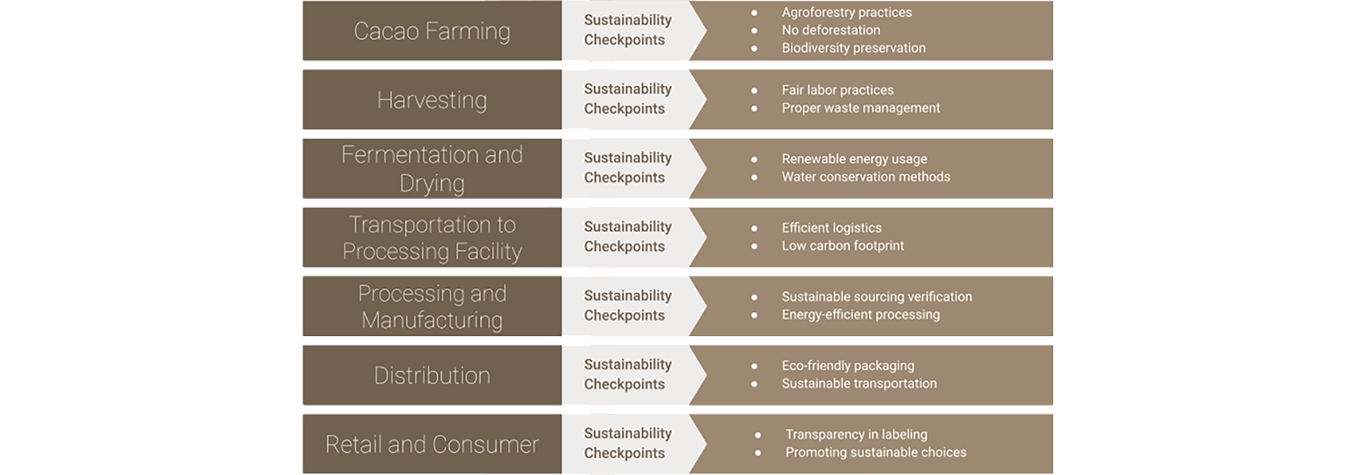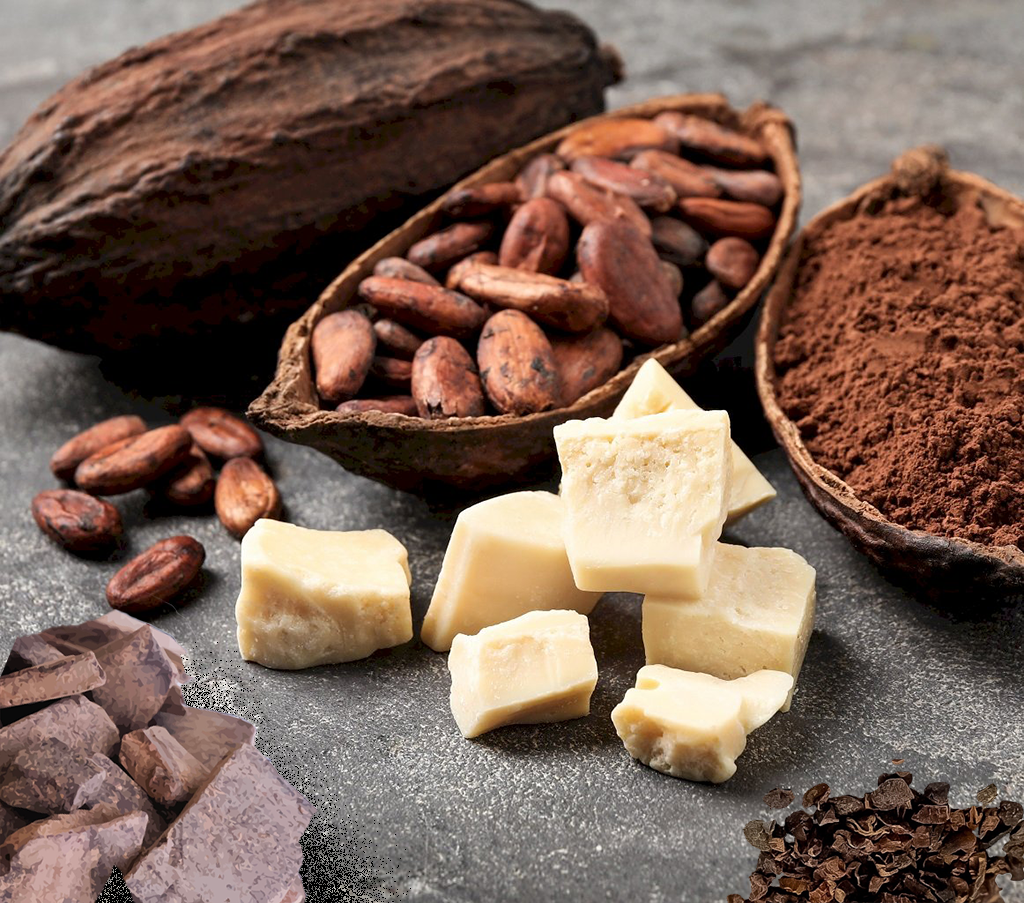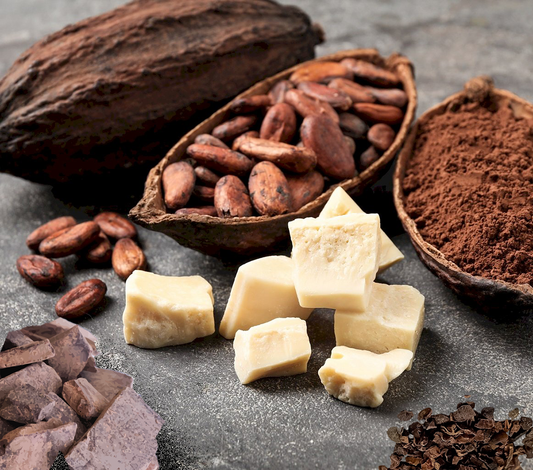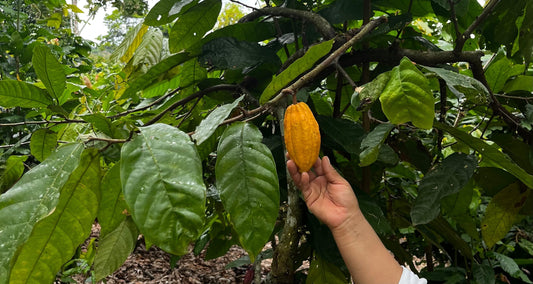

NAVIGATING THE EU DEFORESTATION REGULATION (EUDR): IMPLICATIONS FOR THE CACAO INDUSTRY
The EU Deforestation Regulation presents both challenges and opportunities for the cacao industry. While compliance may require significant effort and investment, the long-term benefits of sustainable sourcing and environmental stewardship are substantial.
The European Union Deforestation Regulation (EUDR), effective from December 30, 2024, aims to combat deforestation by ensuring that commodities and products imported into the EU, including cacao, are not linked to deforestation or forest degradation. This regulation is crucial for the cacao industry, which must adapt to these stringent requirements to maintain market access and uphold sustainability standards.
The primary goal is to reduce the EU's contribution to global deforestation and forest degradation. This regulation emphasizes sustainable and responsible sourcing of commodities like cacao, ensuring the preservation of biodiversity and the protection of indigenous peoples' rights.
Businesses must provide comprehensive documentation proving that their products meet the regulation's criteria. This involves ensuring traceability and verifying that the commodities are sourced from deforestation-free areas. Robust due diligence systems must be implemented to gather and verify data on their supply chains. This includes identifying the geographic origin of the commodities and ensuring their production does not contribute to deforestation.
EU DEFORESTATION REGULATION (EUDR) SUMMARY
EU Deforestation Regulation (EUDR)
Effective from December 30, 2024, the EUDR aims to combat deforestation by ensuring that commodities and products imported into the EU are not linked to deforestation or forest degradation.
Key Requirements
- Traceability: Companies must trace their commodities back to deforestation-free sources.
- Documentation: Comprehensive documentation proving compliance is required.
- Due Diligence: Implement systems to gather and verify supply chain data.
Goals
- Reduce the EU's contribution to global deforestation.
- Promote sustainable and responsible sourcing of commodities like cacao.
- Preserve biodiversity and protect indigenous peoples' rights.
Implications for the Cacao Industry
Increased supply chain transparency.
Adoption of sustainable farming practices.
Support for smallholder farmers to meet compliance.
Ensuring market access to the EU.
Benefits of Compliance
- Enhanced reputation and market position.
- Long-term viability of the cacao industry.
- Increased consumer trust and appeal.
IMPLICATIONS FOR THE CACAO INDUSTRY
1. SUPPLY CHAIN TRANSPARENCY
The EUDR requires greater transparency within the cacao supply chain. Companies must trace their cacao back to its source, ensuring it is produced without deforestation. This necessitates detailed record-keeping and closer collaboration with suppliers and smallholder farmers.

2. SUSTAINABILITY PRACTICES
To comply with the EUDR, businesses must adopt sustainable farming practices. This includes supporting agroforestry, avoiding the conversion of forests to agricultural land, and promoting biodiversity-friendly methods.
3. IMPACT ON SMALLHOLDER FARMERS
Smallholder cacao farmers, who produce a significant portion of the world's cacao, may face challenges in meeting the EUDR requirements. Businesses must work closely with these farmers, providing support and resources to help them adopt sustainable practices and achieve compliance.
4. MARKETACCESS
Compliance with the EUDR is crucial for maintaining access to the EU market. Companies that fail to meet the regulation's requirements risk losing market share and facing legal and financial penalties. Conversely, businesses that adhere to the EUDR can enhance their market position and appeal to environmentally conscious consumers.
BENEFITS OF COMPLIANCE
ENHANCED REPUTATION:
Complying with the EUDR boosts a company's reputation, showcasing its commitment to environmental stewardship and sustainable sourcing. This can attract more consumers and business partners who prioritize sustainability.
LONG-TERM VIABILITY:
Sustainable sourcing practices not only protect forests but also ensure the long-term viability of the cacao industry. Healthy ecosystems contribute to the resilience and productivity of cacao farms, securing supply for future generations.
CONSUMER TRUST:
Transparency and sustainability are increasingly important to consumers. By complying with the EUDR, companies can build trust with their customers, who are more likely to support brands that prioritize ethical and sustainable practices.

SIERRA NATURALS AND EUDR COMPLIANCE
At Sierra Naturals, we are proud to comply with the new EU Deforestation Regulation, ensuring our cacao products are sustainably sourced and deforestation-free. Our commitment to environmental stewardship and ethical sourcing guarantees that you can enjoy our premium Peruvian cacao products with a clear conscience.

For further information on the EU Deforestation Regulation and its implications for the cacao sector, please refer to the following sources:
KNOW MORE HERE...
View all-

EU REGULATION ON NICKEL IN COCOA & CHOCOLATES
At Sierra Naturals, we are committed to upholding the highest standards of food safety and quality. That’s why every batch of our cacao powder and chocolate undergoes rigorous nickel testing....
EU REGULATION ON NICKEL IN COCOA & CHOCOLATES
At Sierra Naturals, we are committed to upholding the highest standards of food safety and quality. That’s why every batch of our cacao powder and chocolate undergoes rigorous nickel testing....
-

FROM THE HEART OF SAN MARTÍN: WILD-GROWN CACAO ...
When you choose cacao from Sierra Naturals, you’re supporting more than a product. You're standing with farming families, protecting forest biodiversity, and enjoying one of the finest expressions of nature’s...
FROM THE HEART OF SAN MARTÍN: WILD-GROWN CACAO ...
When you choose cacao from Sierra Naturals, you’re supporting more than a product. You're standing with farming families, protecting forest biodiversity, and enjoying one of the finest expressions of nature’s...
-

NAVIGATING THE EU DEFORESTATION REGULATION (EUD...
Understand the impact of the EU Deforestation Regulation (EUDR) on the cacao industry and how Sierra Naturals ensures sustainable sourcing. Learn about the regulation's requirements and the benefits of compliance...
NAVIGATING THE EU DEFORESTATION REGULATION (EUD...
Understand the impact of the EU Deforestation Regulation (EUDR) on the cacao industry and how Sierra Naturals ensures sustainable sourcing. Learn about the regulation's requirements and the benefits of compliance...



